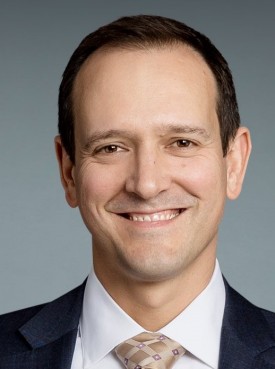Enhancing Population Health Approaches to Deliver Preventive Care
In the wake of COVID-19, healthcare organizations are looking to refine their population health strategies and focus on preventive care measures.

Source: Getty Images
- In medical practice, prevention is the pinnacle of quality care delivery.
Reaching patients before they develop a costly disease or experience an adverse health event can not only boost outcomes, but also reduce expenses and utilization. Preventive care measures like cholesterol tests, cancer screenings, and health counseling can help providers catch anomalies early and ensure patients stay on track.
While making sure people come in for routine screenings and tests is a challenge even under ordinary circumstances, the onset of COVID-19 presented a substantial hurdle for preventive care. With an unknown virus rapidly tearing its way across the country, many patients felt that the doctor’s office was a risk they simply weren’t willing to take.
The Health Care Cost Institute (HCCI) reports that mammograms were down nearly 80 percent in April 2020 compared to 2019, while the number of colonoscopies performed in 2020 declined by almost 25 percent from 2019. Researchers found similar trends in tests used for prostate cancer screening, childhood immunizations, and Pap smears.
As the country increasingly looks forward to re-openings and the return of some semblance of normalcy, the expectation is that preventive care use will return to its pre-pandemic rates.
However, the gaps created over the last year have critical implications for patients’ long-term health and could potentially lead to poorer outcomes over time.
Additionally, COVID-19 was an eye-opener for many organizations – for better or worse. The virus exposed and exacerbated existing gaps in care, and many entities struggled to remedy these disparities during the crisis. At the same time, leaders had to recognize that these issues wouldn’t magically go away when pandemic restrictions did.
To improve patient health both now and going forward, the healthcare industry is working to develop and refine population health approaches for more preventive care. Leveraging data and analytics tools, organizations are identifying which patient populations need interventions the most, and tailoring their strategies to meet individuals’ needs.
Addressing primary care, social determinants
Although the full impact of the pandemic on population health has yet to be fully realized, hospitals and health systems across the nation have seen trends of delayed health screenings and worsening chronic conditions.
At Family Health Centers at NYU Langone (FHC), however, leaders were able to keep patients on track. Primarily located in Sunset Park, Brooklyn, the organization provides primary and preventive care to adults and children, regardless of their ability to pay or their health insurance status.

Isaac Dapkins, MD
“We are a federally qualified health center, and many of our patients have Medicaid, while some have no insurance. We strive to provide quality care to everybody,” said Isaac P. Dapkins, MD, chief medical officer of the FHC.
“In a setting like this – which is mostly primary care – we have a lot of information that we have to absorb when we visit with our patients, and the visits are relatively short.”
To ensure patients maintained both preventive and routine care during the pandemic, FHC developed a population health management alert in its EHR that helps close care gaps for chronic disease treatment and prevention.
The alert brings all gaps in care in front of providers in a single place – the same place for every patient and every doctor, every time.
“By implementing this tool into the EHR, we were able to standardize care regardless of what clinician patients are seeing and the reasons why the patient is seeing them,” said Rasheda V. Prescott, MD, physician informaticist at FHC.
“We're able to address care gaps, and address them in a way that's standardized and in alignment with preventative health guidelines. The tool also improves efficiency and allows the clinician to spend more time with their patients instead of being on the computer.”
Prescott also pointed out that the EHR presents a unique opportunity for organizations to leverage clinical decision support tools and alerts.
“Most organizations, if not all at this point, are using EHRs. It's worthwhile to explore ways to use clinical decision support to assist clinicians with preventive health processes. That's the major thing: Utilize the EHR and take advantage of clinical decision support to make sure that your clinicians are doing things in a standardized way that adheres to guidelines. This decreases the chance that things will be missed or forgotten,” she noted.
“A lot of times patients come in and providers are interested in addressing their needs or the reason why they actually came to the office. But if clinicians are able to use alerts or clinical decision support, they can also address preventive health.”

Andrew Renda, Humana
To ensure alerts and clinical decision support tools are effective, leaders should make sure they’ll lessen a provider’s administrative burden – not add to it.
“The idea of developing something simple and easy to follow for all providers – a single, one-click process that doesn't require a lot of time to review – is the best way to achieve standardization in a primary care setting,” Dapkins said.
“Every patient walking through the door in our practice is going to get the same treatment, because we have the same standard approach to managing health risk. It elevates the quality of the practice as a whole.”
On the payer side, leading organizations are also utilizing population health approaches to enhance preventive care.
Humana recently released its 2021 Bold Goal Progress Report, which describes the company’s advancement with its population health strategy launched in 2015.
Bold Goal initiatives aim to address the social determinants of health and health-related social needs of Humana members and communities. The report stated that in 2020, Humana conducted nearly 6.2 million screenings for health-related social needs – resulting in the connection of members to resources that directly addressed their needs.
“When we first started the Bold Goal program, we had an objective of improving health for people, defined by health-related quality of life. When we did some analysis with the Robert Wood Johnson Foundation, we assumed that addressing chronic conditions would be the best way to improve health,” said Andrew Renda, vice president of Humana’s Bold Goal and population health strategy.
“In reality, we found that the social determinants of health had the biggest impact on health-related quality of life. That put us down the path of developing analytics pipelines and interventions for social factors like food insecurity.”
By now, it’s widely understood that non-clinical factors can have a greater impact on patient health than clinical elements. When COVID-19 started spreading across the US, this truth became even more evident – and Humana acted fast.
“Because of the pandemic, social needs were exacerbated. There were more people that were food insecure or lonely. In many ways, it accelerated our work. We had to respond. So, we stood up a program called Basic Needs where we triaged food insecurity and then sent out meal kits. Over the last year, we've sent almost a million and a half meal kits to about 90,000 people,” Renda said.
“Social isolation was also exacerbated. Pre-pandemic, about one in five seniors was lonely. After the pandemic hit, that went up to one in three. We had to figure out ways to connect people, and because we couldn't do it in person, we had to figure out how to create virtual networks and virtual connections.”
In the provider realm, primary care physicians and specialists are teaming up to deliver preventive care and improve outcomes. Synergy Healthcare, a network of primary care physicians and specialists serving the Nashville area, aims to provide patients with quality, preventive care.
Synergy recently announced the Synergy Clinically Integrated Network (Synergy CIN), a new network of providers that will enhance care coordination and improve patient outcomes.
“COVID has impacted patient health in terms of accessibility and getting needed care. Many patients didn’t want to see their doctor or go to the hospital because they were worried about contracting the virus,” said Randy Fullerton, MD, internal medicine specialist and Synergy CIN board chairman.
“Synergy has aimed to proactively reach out to our patients and let them know that we're available to help with their care, whether they come to see us in the office or whether they connect with us via telehealth.”
At the independent physician association (IPA) level, Synergy physicians have aimed to provide higher quality preventive care at lower costs. While Fullerton acknowledged that both of these factors are important, the main goal is to keep patients from ending up in the hospital.
“We want patients to visit their primary care physicians so that we can counsel them on what kind of lifestyle changes they need and what medications they should take to keep them out of the hospital. This helps the patients, their employers – everybody,” Fullerton said.
Connecting with patients, providers to meet population health needs
For a few months in 2020, most doctor’s offices were closed to in-person visits. Patients weren’t going in to get routine screenings and testing done as they normally would, potentially worsening care gaps.
“Blood pressure, diabetes, and obesity are conditions that increase patients’ risk of poor COVID-19 outcomes. It was extremely important to make sure that these patients weren't lost over the past year, and that we were managing and optimizing these risk factors,” Prescott said.
To accomplish this goal, FHC leaders ensured the population health alert applied to telehealth visits as well. The tool continued to remind providers about all of their patients’ needs, even when appointments went virtual.
“We actually showed improvement in our colon cancer screening during the time when most practices saw a decrease in their screening. This is evidence that this type of process works well,” said Dapkins.
“We’ve found that it’s really critical for providers to connect to patients between doctor’s visits, and connecting people to virtual health has made a huge difference. Many, if not most, of our patients now have the ability to connect with us through a virtual visit, and that's not going away. We have to be able to connect with our patients virtually in order to maintain the quality of care that we provide.”

Rasheda Prescott, MD
In some cases, connecting with patients will require healthcare leaders to step outside of the clinical setting.
“It’s really important not to rely only on analytics or only on community data. You have to ask people the right questions and you have to use validated screening instruments, because that will give you a true sense of the prevalence of these needs in whatever population you're trying to serve,” Renda stated.
“Sometimes you have to get boots on the ground and talk to the people in those communities, and you have to work with the local community-based organizations to figure out what those key needs are.”
As part of its Bold Goal initiative, Humana surveys its communities to get a good sense of the baseline prevalence of different needs. The screening survey covers ten to twelve social determinants domains, including financial insecurity, food insecurity, and social isolation.
“We think about population health and addressing social determinants of health from a global standpoint. We also have a very community-based approach,” Renda said.
“Right now, we have 16 geographic Bold Goal markets where we have really intentional focus. It's important to take that local approach, because needs aren't the same in different parts of the country, and you can only learn so much from data and analytics.”
Communication among providers is also key in providing comprehensive and preventive care, Fullerton said.
“Our goal is to improve the health of each individual patient. The best way for us to do this is through close collaboration between the primary care doctors and specialists who are all taking care of the patient together. If we don’t coordinate our care, we have too many loose ends,” he explained.
“Collaboration has been key from the standpoint of primary care physicians running the ship and asking the specialists to coordinate with us to improve patient care overall. And in doing so, we improve the care of the community as well.”
Promoting preventive care now and in the future
If there was one advantage to the pandemic, it was the opportunity for hospitals and health systems to evaluate and improve their current care approaches.
“Over the last year, we’ve realized that patient engagement is our biggest challenge. Patient engagement means that our patients know their treatment plans, they know when they need to come in for their next appointment, and they know when they need their blood work done. We have a way to remind people of those things, and we keep an ongoing communication with our patients,” said Dapkins.
“When COVID hit, and we weren't doing in-person visits, it was really telling how much work it took for us to get back in touch and establish visits with all of our patients again. Now, we're focused on building our connectivity to our patients between visits. So, if things change again in the future, we have that close contact with them.”

Randy Fullerton, MD
The crisis pushed the industry to introduce new ways of doing things – some of which will be here to stay.
“Virtual care was important not just during the pandemic, but moving forward it will be an important component for patients who are not able to get in to see a provider,” said Prescott.
“Additionally, having the ability to monitor chronic diseases between visits allows you to manipulate medications before patients come in. Personalized care is here, and it will have a positive impact on healthcare.”
The momentum gained in the past year should endure beyond the current situation in order to truly improve patient health.
“We've made tremendous progress. We've seen statistically significant improvements in Healthy Days in the populations that we serve, particularly in our local markets. But there's a lot of work left to be done, and the pandemic certainly highlighted that. We're not resting on our laurels. We're looking to the future, and we're looking to close more social gaps for more people. The future is really bright in this space,” said Renda.
“The evolution of our work is moving from the idea that we want to improve health to figuring out where we want to focus specifically, to testing out solutions, to now trying to achieve operational maturity with social determinants. By addressing these social needs, we are improving health outcomes, and that then justifies bigger investments which allow us to scale the work. It makes it sustainable.”
The overall aim is to target those populations that are most in need of care, and to identify potential problems as soon as they arise – an approach that will start at the patient level.
“We want to increase the quality of care for each individual patient, and we want to do it at a lower cost. If we improve those processes for each patient, we'll improve those processes for the community as a whole,” Fullerton concluded.
“The goal is to try to reduce the cost of healthcare going forward for the nation. And that has to start by taking care of the individual patient first.”
